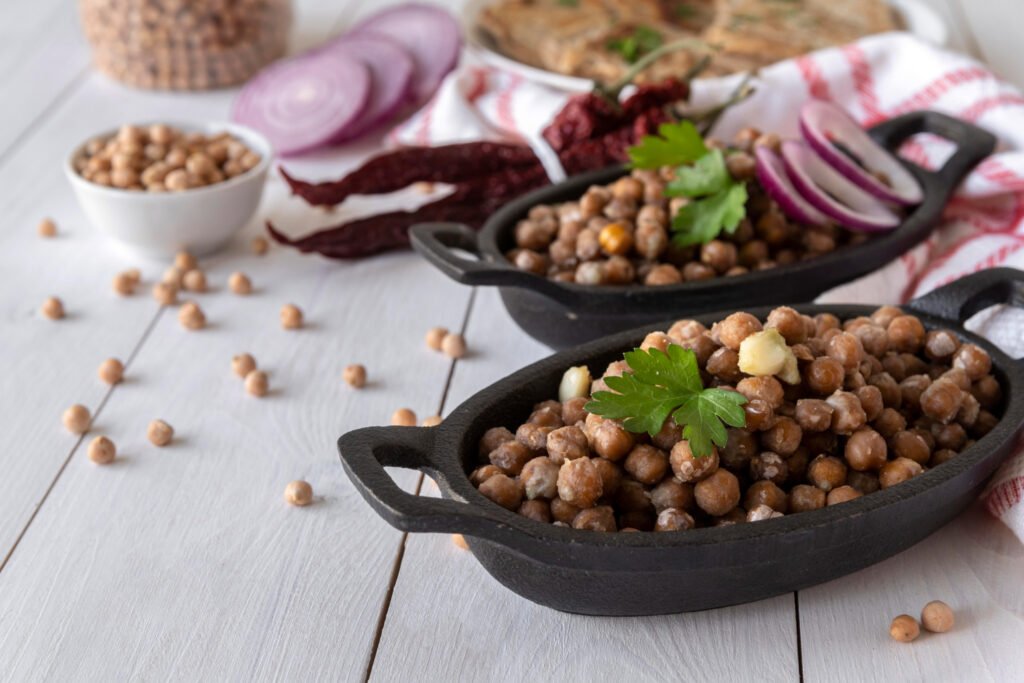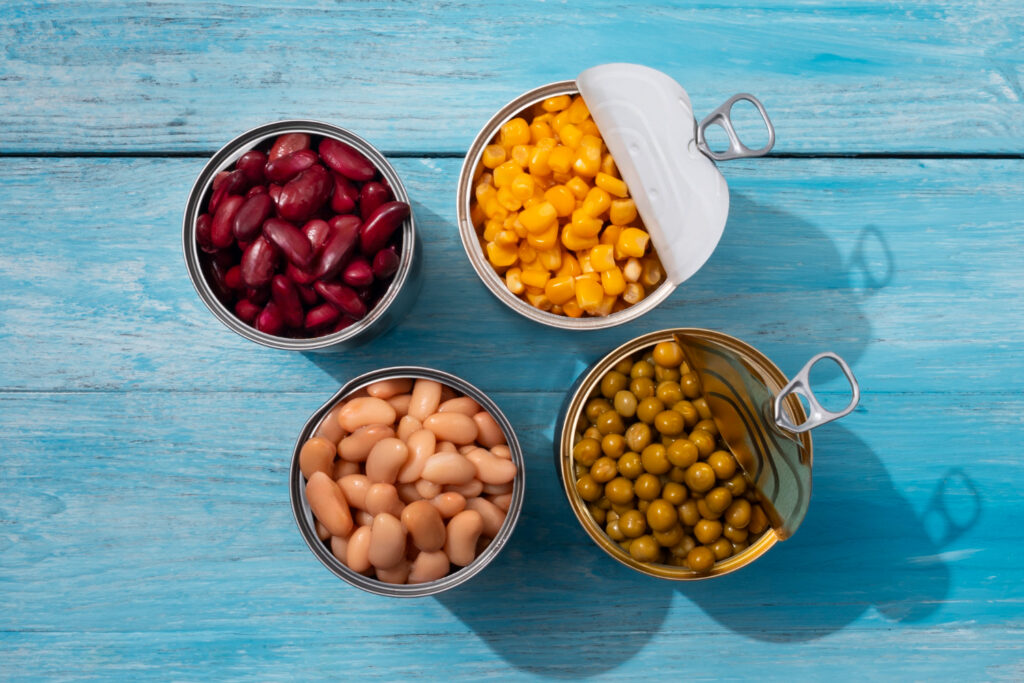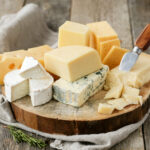
Fast Facts
Eating beans and chickpeas can improve diet quality and nutrient intake
Beans are rich in fiber, supporting heart health and gut microbiome
Consuming beans can lower BMI and waist circumference
Beans are high in essential nutrients like folate, magnesium, and vitamin E
Incorporating beans into your diet can reduce the risk of chronic diseases.
Adding more canned and dried beans and chickpeas to your diet can improve your overall diet quality and may help you reach weight-related goals, new research indicates.
A study published in Nutrition Journal examined the quality of adult diets that included beans and chickpeas compared to those that did not. The findings revealed that people who consumed beans and chickpeas experienced numerous benefits, such as better diet quality, higher intakes of essential nutrients, and improved weight-related outcomes.
“Most people know that beans and chickpeas are heart-healthy, but our research shows they offer much more, including improved nutrient intake and healthier dietary patterns,” said study author Yanni Papanikolaou, MPH, vice president of Nutrition Strategies, Inc., in a news release.
“Our analysis indicates that canned and dry beans and chickpeas help close nutrient gaps and promote nutrient-dense diets in the US,” Papanikolaou added. “Conversely, avoiding beans and chickpeas may lead to nutrient deficits and public health issues in adults.”
Here’s what you need to know about incorporating beans and chickpeas into your diet, their benefits, and how to add more pulses to your daily eating plan.
Eating Beans Improves Diet Quality
The study, funded by the Coalition for the Advancement of Pulses and Cannedbeans.org, utilized data from the National Health and Nutrition Examination Survey (NHANES), which collects information from people across the U.S. and is compiled by the Centers for Disease Control and Prevention (CDC).
Researchers focused on a 24-hour dietary recall period, where participants detailed their diet via in-person interviews. Bean consumption patterns and population weights were analyzed to identify dietary differences. Bean consumption was defined as eating kidney beans, black beans, chickpeas, and pinto beans.
Four distinct bean consumption patterns were identified, along with a “no consumption” group. The four patterns (Bean Dietary Patterns 1–4) varied in the percentage of calories from beans and overall diet quality.
- Bean Dietary Pattern 1 and 2: Largest contribution of calories from vegetables.
- Bean Dietary Pattern 4: Greatest contribution from sweets and snacks.
- Bean Dietary Pattern 3: Over one-third of calories from mixed dishes, which have higher sodium and saturated fat content.
All patterns included approximately 1.7–2 servings of beans per day. Compared to the no bean consumption group, all four patterns showed significantly higher diet quality. Participants consumed more vegetables, greens, beans, seafood, and other plant proteins, and had better fatty acid ratios, with higher levels of heart-healthy polyunsaturated and monounsaturated fats compared to saturated fats.
“Current U.S. dietary patterns show that Americans are not meeting nutrient intake and diet quality recommendations, which can negatively impact public health,” Papanikolaou explained. “Our study showed that adults consuming about two servings of canned or dried beans per day had a 25% improvement in total diet quality compared to those avoiding beans.”
How Beans Benefit Nutrition and Weight Management

Dietary patterns rich in beans are linked to higher diet quality scores due to increased intake from various food groups, including vegetables, greens, seafood, and plant proteins.
Beans are an excellent source of fiber, which supports heart health, a healthy gut microbiome, and reduces low-grade inflammation associated with cardiometabolic diseases like high cholesterol, hypertension, and type 2 diabetes.
According to registered dietitian Lori McCall, MS, RD, LDN, “Beneficial gut bacteria help break down resistant starch in beans, aiding digestion. If you don’t feed them that starch consistently, those healthy strains won’t stick around.” Dishes containing beans are naturally rich in other nutrients, contributing to better overall diet quality.
Bean consumers also have higher intakes of “shortfall nutrients,” such as choline, alpha-linolenic acid, folate, iron, magnesium, and vitamin E. “Shortfall nutrients are typically deficient in the diet and are of health concern,” said registered dietitian Moushumi Mukherjee, MS, RDN. These nutrients, along with dietary fiber and potassium, which are elevated in bean consumption patterns, contribute to lower blood pressure, reduced cardiovascular disease risk, decreased diabetes risk, and reduced cancer risk.
Two of the bean dietary patterns were significantly associated with improved weight-related outcomes. Adults in Bean Dietary Patterns 1 and 2 had lower BMIs. Moreover, adults who consumed various beans showed a 29% lower risk of having an elevated waist circumference compared to non-consumers. This is likely due to the high fiber and protein content of beans, which makes them and the meals containing them filling and satisfying. “Certain diet-related diseases can disrupt metabolic processes, so a well-balanced diet including beans can help achieve weight-related goals,” Mukherjee added.
This research supports the growing evidence for including more beans and legumes in a nutrient-dense diet. “Eating beans daily, along with regular physical activity and a diet rich in fruits, vegetables, whole grains, lean protein, nuts, and seeds, while limiting added sugar, saturated fats, and sodium, can offer significant health benefits,” Papanikolaou noted. Avoiding beans could worsen nutrient deficiencies and public health issues in adults.
Adding More Beans to Your Diet
Beans are a versatile, convenient plant-based protein that add flavor, color, and texture to many dishes. Dried beans typically cook in 45 minutes to 2 hours, while canned beans are ready to use instantly. Both are nutrient-rich. Beans can be the main protein in vegetarian dishes or added to meat dishes for extra protein and fiber.
“Add your favorite variety to savory, mixed-texture dishes like casseroles, stews, stir-fries, and salads,” McCall suggested. Beans can be sneaked into soups and sauces for more protein and a creamy texture, or even into black bean brownies for a higher-fiber dessert.
While canned beans are convenient, they can be high in sodium. Drain and rinse them to reduce salt content, or cook dried beans for full control over sodium levels. Adding garlic, herbs, and spices to the cooking water enhances their flavor
A Quick Review
Beans and chickpeas can significantly enhance diet quality and support weight-related goals. They are rich in fiber and essential nutrients, promoting heart health, better gut microbiome, and reduced inflammation. Consuming about two servings daily can lower BMI and waist circumference, making beans a powerful addition to a balanced diet. They can be easily incorporated into various dishes, making them both versatile and beneficial.











